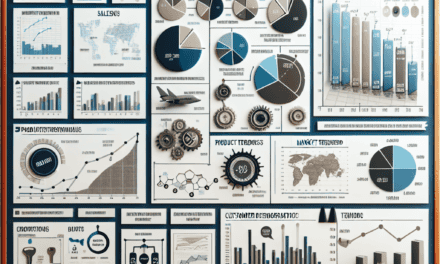“Turn Spare Change into a Wealthy Future: $300 Monthly to $50,000 Annually!”
Introduction
Transforming a modest monthly investment of $300 into a substantial annual dividend stream of $50,000 is an ambitious yet achievable financial goal that requires strategic planning, disciplined investing, and a long-term perspective. This process involves leveraging the power of compound interest, selecting high-yield dividend stocks or funds, and consistently reinvesting dividends to accelerate growth. By understanding market dynamics, diversifying investments, and maintaining a focus on dividend growth, investors can gradually build a robust portfolio that generates significant passive income. This approach not only enhances financial security but also paves the way for financial independence and wealth accumulation over time.
Understanding Dividend Investing: The Basics of Building Wealth
Dividend investing is a strategy that has long been favored by those seeking to build wealth over time. By focusing on companies that regularly distribute a portion of their earnings to shareholders, investors can create a steady stream of income. This approach not only provides financial stability but also offers the potential for significant growth. Transforming a modest monthly investment of $300 into a $50,000 annual dividend stream may seem ambitious, yet it is achievable with careful planning and disciplined execution.
To begin with, understanding the fundamentals of dividend investing is crucial. Dividends are payments made by a corporation to its shareholders, usually derived from profits. Companies that pay dividends are often well-established, financially stable, and have a track record of profitability. These characteristics make them attractive to investors who prioritize income generation and capital preservation. By reinvesting dividends and consistently adding to their portfolio, investors can harness the power of compounding, which significantly enhances wealth accumulation over time.
The first step in this journey is selecting the right stocks. Investors should focus on companies with a history of increasing dividends, as this indicates financial health and a commitment to returning value to shareholders. Additionally, evaluating the dividend yield, payout ratio, and the company’s overall financial performance is essential. A high dividend yield may be enticing, but it is important to ensure that it is sustainable. A payout ratio, which is the percentage of earnings paid out as dividends, should ideally be below 60%, indicating that the company retains enough earnings to fuel future growth.
Once a diversified portfolio of dividend-paying stocks is established, the next step is to reinvest the dividends. Reinvestment allows investors to purchase additional shares, thereby increasing their future dividend income. This process, known as dividend reinvestment, is a powerful tool for compounding returns. Over time, the reinvested dividends can significantly boost the overall value of the portfolio, accelerating the journey towards the $50,000 annual dividend goal.
Moreover, maintaining a disciplined approach to investing is vital. Consistently contributing $300 each month to the portfolio, regardless of market conditions, ensures that investors are buying shares at various price points. This strategy, known as dollar-cost averaging, reduces the impact of market volatility and lowers the average cost per share over time. By staying committed to this regular investment schedule, investors can steadily build their portfolio and increase their dividend income.
Furthermore, it is important to periodically review and adjust the portfolio. As companies evolve, their ability to pay dividends may change. Regularly assessing the financial health of each company and making necessary adjustments ensures that the portfolio remains aligned with the investor’s income goals. This proactive management helps mitigate risks and enhances the potential for achieving the desired dividend stream.
In conclusion, transforming a $300 monthly investment into a $50,000 annual dividend stream is a realistic objective for those who embrace the principles of dividend investing. By selecting quality dividend-paying stocks, reinvesting dividends, maintaining a disciplined investment approach, and actively managing the portfolio, investors can create a robust income stream. This strategy not only provides financial security but also paves the way for long-term wealth accumulation, demonstrating the transformative power of dividend investing.
Selecting High-Yield Stocks: Key Criteria for Maximizing Returns
Investing in high-yield stocks is a strategic approach to transforming a modest monthly investment into a substantial annual dividend stream. For those aiming to turn a $300 monthly contribution into a $50,000 annual dividend, selecting the right stocks is crucial. The process begins with understanding the key criteria that can maximize returns while minimizing risks. By focusing on these criteria, investors can make informed decisions that align with their financial goals.
First and foremost, the dividend yield is a critical factor to consider. This metric, expressed as a percentage, indicates how much a company pays out in dividends relative to its stock price. A higher yield can suggest a more attractive income stream; however, it is essential to ensure that the yield is sustainable. Companies with excessively high yields may be at risk of cutting dividends if they face financial difficulties. Therefore, it is advisable to look for stocks with a yield that is above average but not excessively high, typically in the range of 4% to 6%.
In addition to yield, the payout ratio is another vital consideration. This ratio measures the proportion of earnings a company distributes as dividends. A lower payout ratio indicates that a company retains more of its earnings for growth and reinvestment, which can be a sign of financial health. Ideally, investors should seek companies with a payout ratio below 60%, as this suggests a balance between rewarding shareholders and maintaining sufficient capital for future expansion.
Furthermore, the financial stability of a company is paramount. Evaluating a company’s balance sheet can provide insights into its ability to sustain dividend payments. Key indicators include a low debt-to-equity ratio and strong cash flow. Companies with manageable debt levels and robust cash flow are better positioned to weather economic downturns and continue paying dividends. Additionally, examining a company’s dividend history can offer valuable information. A consistent track record of dividend payments and growth over several years is often indicative of a reliable income source.
Moreover, industry and sector analysis play a significant role in stock selection. Certain sectors, such as utilities, consumer staples, and real estate investment trusts (REITs), are traditionally known for offering higher dividend yields. These sectors often provide essential services or products, making them less susceptible to economic fluctuations. However, diversification across multiple sectors is crucial to mitigate risks associated with industry-specific downturns.
Another important aspect is the company’s growth potential. While high-yield stocks are often associated with mature companies, it is beneficial to identify those with prospects for future growth. Companies that can increase their earnings over time are more likely to raise their dividends, thereby enhancing the overall return on investment. Analyzing market trends, competitive positioning, and management effectiveness can help identify such opportunities.
Finally, it is essential to consider the tax implications of dividend income. Depending on the investor’s jurisdiction, dividends may be subject to different tax rates compared to capital gains. Understanding these implications can influence the net return on investment and should be factored into the decision-making process.
In conclusion, selecting high-yield stocks requires a comprehensive evaluation of various factors, including dividend yield, payout ratio, financial stability, industry dynamics, growth potential, and tax considerations. By carefully analyzing these criteria, investors can strategically build a portfolio that transforms a modest monthly investment into a significant annual dividend stream, ultimately achieving their financial objectives.
The Power of Compound Interest: Reinvesting Dividends for Growth
The concept of transforming a modest monthly investment into a substantial annual dividend stream is a testament to the power of compound interest and the strategic reinvestment of dividends. At the heart of this financial strategy lies the principle of compounding, which Albert Einstein famously referred to as the “eighth wonder of the world.” By understanding and harnessing this principle, investors can significantly enhance their wealth over time, even starting with a relatively small amount of capital.
To begin with, the process involves consistently investing a fixed amount, such as $300 monthly, into a diversified portfolio of dividend-paying stocks or mutual funds. The key is to select investments that not only offer regular dividend payouts but also have a history of increasing those dividends over time. This approach ensures that the initial investment grows steadily, fueled by both the reinvestment of dividends and the appreciation of the underlying assets.
As dividends are received, they are reinvested to purchase additional shares of the same stocks or funds. This reinvestment is crucial because it allows the investor to benefit from compound interest. Essentially, the dividends generate more dividends, creating a snowball effect that accelerates the growth of the investment. Over time, this compounding effect can lead to exponential growth, transforming a modest monthly contribution into a significant annual income stream.
Moreover, the power of compound interest is magnified by the time horizon of the investment. The longer the investor remains committed to reinvesting dividends, the greater the potential for growth. For instance, an investor who diligently reinvests dividends over a period of 20 to 30 years can witness a dramatic increase in the value of their portfolio. This long-term perspective is essential, as it allows the compounding effect to fully manifest, turning small, regular contributions into a substantial financial resource.
In addition to the time factor, the choice of investments plays a critical role in achieving the desired outcome. Investors should focus on companies with a strong track record of dividend growth, as these firms are more likely to continue increasing their payouts in the future. Furthermore, diversifying across different sectors and industries can help mitigate risks and enhance the stability of the portfolio. By carefully selecting and managing their investments, individuals can optimize their chances of reaching the ambitious goal of a $50,000 annual dividend stream.
It is also important to consider the impact of taxes on dividend income. Depending on the investor’s jurisdiction, dividends may be subject to taxation, which can affect the overall return on investment. Therefore, it is advisable to explore tax-efficient investment vehicles, such as retirement accounts, which can help minimize the tax burden and maximize the growth potential of the portfolio.
In conclusion, transforming a $300 monthly investment into a $50,000 annual dividend stream is an achievable goal for those who are willing to embrace the power of compound interest and commit to a disciplined, long-term investment strategy. By reinvesting dividends and carefully selecting a diversified portfolio of growth-oriented dividend stocks, investors can unlock the full potential of their investments and secure a substantial passive income stream for the future. This approach not only underscores the importance of patience and persistence in wealth-building but also highlights the transformative impact of compound interest on financial growth.
Diversification Strategies: Balancing Risk and Reward in Your Portfolio

Transforming a modest monthly investment of $300 into a substantial $50,000 annual dividend stream is an ambitious yet achievable goal, provided one employs effective diversification strategies. Diversification, a fundamental principle in portfolio management, involves spreading investments across various asset classes to balance risk and reward. By understanding and implementing these strategies, investors can enhance their potential for long-term financial success.
To begin with, it is essential to recognize the importance of diversification in mitigating risk. Investing solely in a single asset or sector can expose an investor to significant volatility and potential losses. By diversifying, one can reduce the impact of poor performance in any single investment, thereby stabilizing the overall portfolio. This approach is particularly crucial when aiming to build a reliable dividend stream, as it ensures that income is not overly dependent on the success of a few companies or industries.
One effective diversification strategy is to allocate investments across different sectors. For instance, an investor might consider distributing their $300 monthly contribution among sectors such as technology, healthcare, consumer goods, and utilities. Each of these sectors has unique characteristics and responds differently to economic changes, providing a buffer against sector-specific downturns. Moreover, certain sectors, like utilities and consumer staples, are known for their stable dividend payouts, making them attractive options for income-focused investors.
In addition to sector diversification, geographic diversification can further enhance a portfolio’s resilience. By investing in both domestic and international markets, investors can capitalize on growth opportunities worldwide while reducing exposure to country-specific risks. For example, while the U.S. market may offer robust growth prospects, emerging markets in Asia or Latin America might present higher dividend yields. This global approach not only broadens the investment horizon but also taps into diverse economic cycles, thereby smoothing out potential fluctuations in dividend income.
Furthermore, diversifying across different asset classes is another critical component of a balanced portfolio. While equities are a primary source of dividends, incorporating fixed-income securities, such as bonds, can provide stability and consistent income. Bonds, particularly those issued by reputable corporations or governments, offer predictable interest payments, which can complement the more variable nature of stock dividends. Additionally, real estate investment trusts (REITs) can be an attractive option for dividend-seeking investors, as they are required to distribute a significant portion of their income as dividends.
As investors work towards their goal of generating a $50,000 annual dividend stream, it is crucial to regularly review and adjust their portfolio. Market conditions, economic trends, and individual financial goals can change over time, necessitating periodic rebalancing to maintain an optimal risk-reward balance. This ongoing assessment ensures that the portfolio remains aligned with the investor’s objectives and continues to capitalize on emerging opportunities.
In conclusion, transforming a $300 monthly investment into a $50,000 annual dividend stream is a challenging yet attainable objective through strategic diversification. By spreading investments across various sectors, geographies, and asset classes, investors can effectively balance risk and reward, paving the way for a stable and growing income stream. With careful planning, disciplined execution, and regular portfolio evaluation, investors can achieve their financial aspirations while navigating the complexities of the investment landscape.
Tax Implications: Navigating Dividend Income and Tax Efficiency
Transforming a modest monthly investment of $300 into a substantial $50,000 annual dividend stream is an ambitious yet achievable financial goal. However, as with any investment strategy, understanding the tax implications is crucial to maximizing returns and ensuring tax efficiency. Dividend income, while a rewarding source of passive income, is subject to specific tax treatments that can significantly impact the net income received by investors. Therefore, navigating these tax implications with a strategic approach is essential for optimizing the benefits of dividend investing.
To begin with, it is important to distinguish between qualified and non-qualified dividends, as they are taxed differently. Qualified dividends, which are typically paid by U.S. corporations and meet certain holding period requirements, benefit from the lower long-term capital gains tax rates. These rates range from 0% to 20%, depending on the investor’s taxable income and filing status. In contrast, non-qualified dividends are taxed at ordinary income tax rates, which can be significantly higher. Therefore, investors aiming to build a $50,000 annual dividend stream should prioritize investments that yield qualified dividends to enhance tax efficiency.
Moreover, the choice of investment account can also influence the tax treatment of dividend income. Tax-advantaged accounts, such as Roth IRAs or traditional IRAs, offer opportunities to defer or even eliminate taxes on dividends. In a Roth IRA, for instance, dividends grow tax-free, and qualified withdrawals are not subject to taxes, making it an attractive option for long-term dividend growth. Conversely, in a traditional IRA, dividends are tax-deferred until withdrawal, at which point they are taxed as ordinary income. Thus, strategically utilizing these accounts can help investors manage their tax liabilities effectively.
Additionally, investors should be mindful of the impact of dividend reinvestment plans (DRIPs) on their tax situation. While DRIPs allow dividends to be automatically reinvested into additional shares, potentially accelerating the growth of the investment, they do not exempt the investor from paying taxes on the dividends received. Each reinvested dividend is considered taxable income in the year it is received, regardless of whether it is reinvested or taken as cash. Therefore, maintaining accurate records of reinvested dividends is essential for tax reporting purposes.
Furthermore, tax-loss harvesting can be a valuable strategy for offsetting dividend income. By selling underperforming investments at a loss, investors can offset capital gains and up to $3,000 of ordinary income annually, thereby reducing their overall tax burden. This strategy can be particularly beneficial in years when dividend income is substantial, as it provides a means to mitigate the tax impact.
Finally, staying informed about changes in tax laws and regulations is crucial for maintaining tax efficiency in dividend investing. Tax policies can evolve, and staying abreast of these changes ensures that investors can adapt their strategies accordingly. Consulting with a tax professional or financial advisor can provide valuable insights and guidance tailored to an individual’s specific financial situation.
In conclusion, while the prospect of transforming a $300 monthly investment into a $50,000 annual dividend stream is enticing, understanding and navigating the tax implications is essential for maximizing the benefits of such a strategy. By prioritizing qualified dividends, utilizing tax-advantaged accounts, managing reinvestment plans, employing tax-loss harvesting, and staying informed about tax law changes, investors can effectively enhance their tax efficiency and achieve their financial goals.
Monitoring and Adjusting: Keeping Your Investment Strategy on Track
Monitoring and adjusting your investment strategy is crucial when aiming to transform a modest monthly investment of $300 into a substantial $50,000 annual dividend stream. This ambitious goal requires not only a well-thought-out plan but also consistent oversight and flexibility to adapt to changing market conditions. By diligently tracking your investments and making informed adjustments, you can enhance your portfolio’s performance and increase the likelihood of achieving your financial objectives.
To begin with, it is essential to establish a robust monitoring system that allows you to keep a close eye on your investments. This involves regularly reviewing your portfolio to assess the performance of individual assets and the overall strategy. By doing so, you can identify any underperforming investments that may need to be replaced or rebalanced. Utilizing financial tools and platforms that provide real-time data and analytics can greatly assist in this process, offering insights into market trends and potential opportunities for growth.
Moreover, staying informed about economic developments and market dynamics is vital. Economic indicators, interest rate changes, and geopolitical events can all have significant impacts on the stock market and, consequently, on your dividend income. By keeping abreast of these factors, you can make timely decisions to protect your investments and capitalize on emerging opportunities. Subscribing to financial news outlets, attending investment seminars, and engaging with online investment communities are effective ways to stay informed and gain diverse perspectives.
In addition to monitoring, adjusting your investment strategy is equally important. As market conditions evolve, so too should your approach to investing. This may involve reallocating assets to different sectors or industries that show promise or adjusting the balance between growth and income-focused investments. For instance, if a particular sector is experiencing rapid growth, it might be prudent to increase your exposure to that area to maximize potential returns. Conversely, if a sector is underperforming, reducing your investment in that area could help mitigate losses.
Furthermore, it is crucial to periodically reassess your risk tolerance and investment goals. As you progress towards your target of a $50,000 annual dividend stream, your financial situation and risk appetite may change. Life events such as career advancements, family changes, or nearing retirement can all influence your investment strategy. By regularly evaluating your personal circumstances and adjusting your portfolio accordingly, you can ensure that your investments remain aligned with your long-term objectives.
Another key aspect of maintaining an effective investment strategy is diversification. By spreading your investments across a variety of asset classes, sectors, and geographic regions, you can reduce the impact of market volatility on your portfolio. Diversification not only helps protect against significant losses but also provides opportunities for growth in different areas of the market. Regularly reviewing and adjusting your diversification strategy can help optimize your portfolio’s performance and increase the likelihood of achieving your dividend income goals.
In conclusion, transforming a $300 monthly investment into a $50,000 annual dividend stream is a challenging yet attainable goal with the right approach. By diligently monitoring your investments, staying informed about market conditions, and making strategic adjustments, you can enhance your portfolio’s performance and work towards achieving your financial objectives. Remember that investing is a dynamic process that requires ongoing attention and flexibility. By remaining proactive and adaptable, you can navigate the complexities of the market and move closer to realizing your dividend income aspirations.
Real-Life Success Stories: Learning from Investors Who Achieved $50,000 Annual Dividends
In the realm of personal finance, the journey from modest monthly investments to substantial annual dividends is a testament to the power of strategic planning and disciplined execution. One compelling real-life success story involves an investor who transformed a mere $300 monthly contribution into an impressive $50,000 annual dividend stream. This achievement underscores the potential of consistent investing, the magic of compounding, and the importance of selecting the right investment vehicles.
Initially, the investor began by setting clear financial goals, recognizing that a disciplined approach was essential to achieving significant returns. With a focus on dividend growth stocks, the investor sought companies with a history of increasing dividend payouts. This strategy not only provided a steady income stream but also ensured that the dividends would grow over time, outpacing inflation and enhancing purchasing power. By reinvesting dividends, the investor harnessed the power of compounding, allowing the investment to grow exponentially over the years.
Moreover, diversification played a crucial role in this success story. By spreading investments across various sectors, the investor mitigated risks associated with market volatility. This approach ensured that the portfolio remained resilient during economic downturns, while still capitalizing on growth opportunities in different industries. The investor’s portfolio included a mix of blue-chip stocks, known for their stability and reliable dividends, as well as smaller companies with high growth potential. This balanced strategy provided both security and growth, contributing significantly to the eventual achievement of a $50,000 annual dividend stream.
In addition to diversification, the investor maintained a long-term perspective, understanding that patience is a key component of successful investing. By resisting the temptation to react to short-term market fluctuations, the investor avoided unnecessary trading fees and potential losses. This steadfast commitment to a long-term strategy allowed the portfolio to recover from temporary setbacks and continue its upward trajectory.
Furthermore, the investor regularly reviewed and adjusted the portfolio to align with changing market conditions and personal financial goals. This proactive approach ensured that the investment strategy remained relevant and effective, maximizing returns while minimizing risks. By staying informed about market trends and company performance, the investor was able to make informed decisions that contributed to the portfolio’s growth.
Another critical factor in this success story was the investor’s commitment to continuous learning. By educating themselves about investment strategies, market dynamics, and financial planning, the investor was able to make informed decisions and adapt to changing circumstances. This dedication to learning not only enhanced the investor’s financial acumen but also instilled confidence in their ability to achieve their financial goals.
Ultimately, this real-life success story illustrates that transforming a modest monthly investment into a substantial annual dividend stream is achievable with the right approach. By setting clear goals, diversifying investments, maintaining a long-term perspective, and committing to continuous learning, investors can unlock the potential of their portfolios and achieve financial independence. This story serves as an inspiration to those who aspire to build a sustainable income stream through disciplined investing, demonstrating that with patience and perseverance, financial dreams can indeed become a reality.
Q&A
1. **What is the initial investment strategy?**
Start by investing $300 monthly into a diversified portfolio of dividend-paying stocks or dividend-focused mutual funds/ETFs.
2. **What is the expected annual return rate?**
Aim for an average annual return rate of 8-10%, which is typical for a well-managed dividend-focused portfolio.
3. **How long will it take to reach a $50,000 annual dividend stream?**
Assuming a 4% dividend yield, it would require an investment portfolio of $1.25 million to generate $50,000 annually. This could take several decades, depending on market conditions and consistent reinvestment.
4. **What role does dividend reinvestment play?**
Reinvesting dividends accelerates growth by compounding returns, increasing the portfolio size and future dividend income.
5. **How can one increase the dividend yield?**
Focus on high-yield dividend stocks, but balance with growth potential and risk management to avoid unsustainable yields.
6. **What are the risks involved?**
Market volatility, dividend cuts, and economic downturns can impact both portfolio value and dividend income.
7. **What is a realistic timeline for achieving this goal?**
With disciplined investing, reinvestment, and favorable market conditions, it might take 30-40 years to achieve a $50,000 annual dividend stream from a $300 monthly investment.
Conclusion
Transforming a $300 monthly investment into a $50,000 annual dividend stream is an ambitious financial goal that requires strategic planning, disciplined investing, and time. To achieve this, an investor would need to focus on high-yield dividend stocks or funds, reinvest dividends to compound growth, and potentially increase their monthly contributions over time. Assuming an average annual dividend yield of 4%, the investor would need to accumulate a portfolio worth approximately $1.25 million to generate $50,000 in annual dividends. This process could take several decades, depending on market conditions and the investor’s ability to increase contributions. Therefore, while challenging, with consistent investment, reinvestment of dividends, and a focus on high-yield opportunities, it is possible to build a substantial dividend income stream over the long term.





